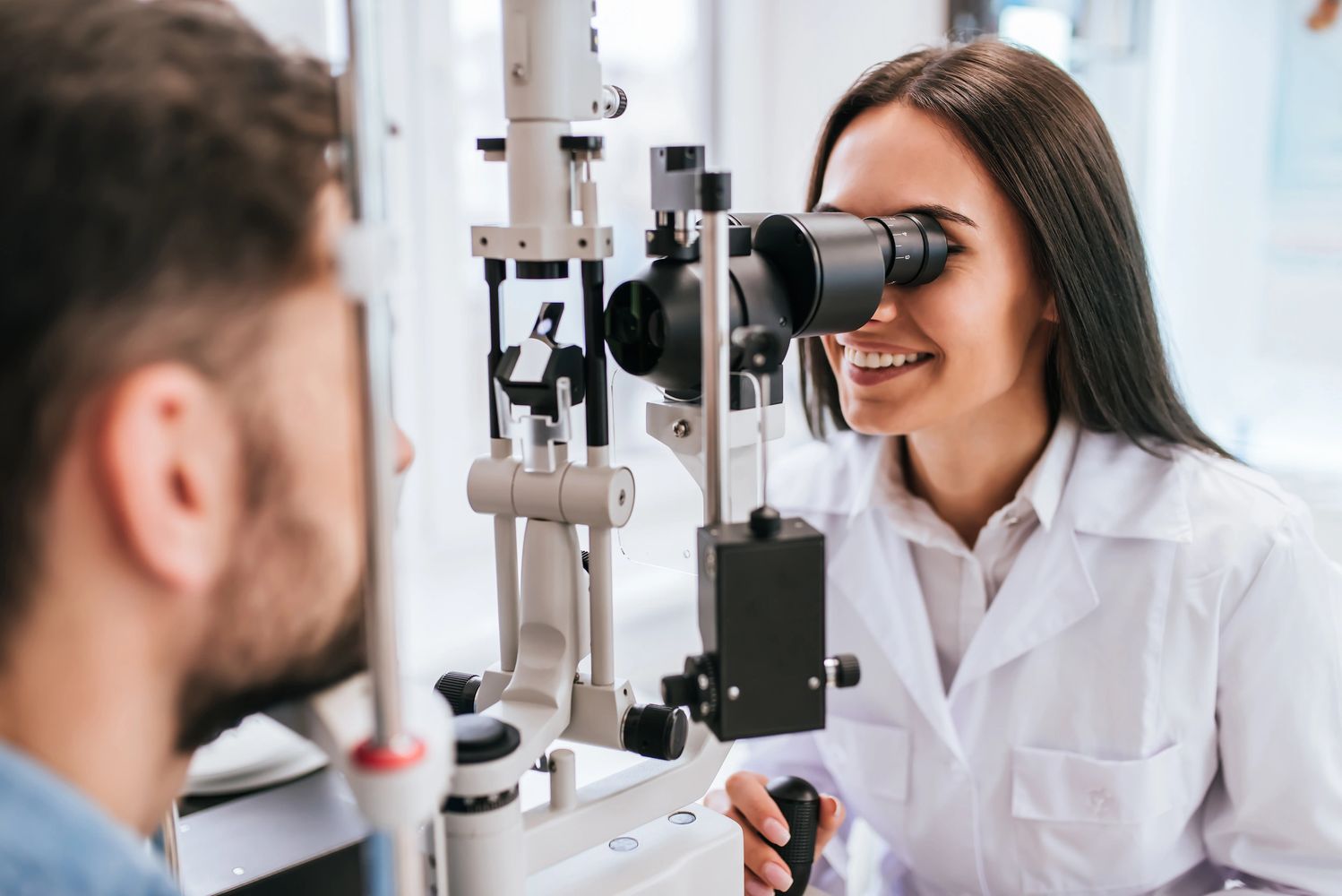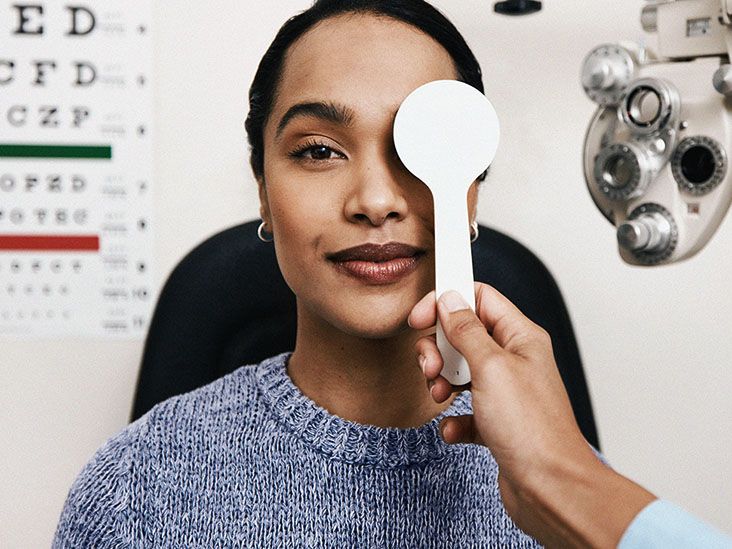Checking Out the Spectrum of Eye Conditions Treated for Improved Vision Health
In the world of vision wellness, a diverse range of eye problems exists, ranging from common refractive errors to a lot more complex chronic conditions. By exploring the spectrum of eye conditions that can affect one's vision, a deeper understanding of the ins and outs involved in preserving eye wellness arises.
Typical Refractive Errors
Refractive mistakes, such as hyperopia, astigmatism, and nearsightedness, are typical vision conditions that affect the clarity of vision. Nearsightedness, likewise called nearsightedness, creates remote things to show up fuzzy, while hyperopia, or farsightedness, makes close-up things hard to see plainly. Astigmatism causes fuzzy or altered vision in any way ranges as a result of an irregularly designed cornea.
These refractive errors occur when the shape of the eye avoids light from focusing straight on the retina, leading to obscured vision. Nearsightedness is typically triggered by the eyeball being as well long, hyperopia by the eyeball being as well short, and astigmatism by an uneven curvature of the cornea or lens.
Thankfully, these common refractive mistakes can be fixed through different techniques such as prescription eyeglasses, contact lenses, or refractive surgery like LASIK. By addressing these visual problems, individuals can experience improved quality and intensity of vision, eventually enhancing their total lifestyle. Routine eye exams are essential for detecting and handling these conditions to maintain ideal eye health.
Age-Related Eye Problems
As people age, they might end up being more susceptible to various eye problems that can influence their vision health and wellness. Age-related eye problems are widespread among older grownups and can considerably influence their lifestyle. Among the most usual age-related eye conditions is presbyopia, a natural component of aging where the lens of the eye loses its adaptability, leading to difficulty concentrating on close items. Age-related macular deterioration (AMD) is one more substantial concern, impacting the main part of the retina and bring about a loss of central vision. Cataracts, characterized by the clouding of the eye's lens, are also regularly seen in older individuals and can trigger obscured vision. Glaucoma, a group of eye problems that damage the optic nerve, is much more typical with age and can result in vision loss if left neglected. Routine eye exams, very early detection, and timely treatment are crucial in handling age-related eye conditions and protecting optimum vision health as individuals age.
Chronic Eye Diseases
With a shift from age-related eye problems to persistent eye conditions, the emphasis now turns to lasting problems that need continuous administration to maintain vision health. Eye Doctors in Andalusia. Chronic eye conditions include a series of problems that influence the eyes over an extensive duration, usually causing modern vision loss if left unattended. Diseases like glaucoma, diabetic person retinopathy, age-related macular deterioration, and chronic completely dry eye disorder loss under this classification
Age-related macular degeneration influences the central component of the retina, impacting sharp, main vision. Chronic completely dry eye syndrome, on the various other hand, can cause website here pain and prospective damages to the cornea if not correctly dealt with.
Early discovery, regular tracking, and adherence to therapy plans are crucial in handling persistent eye conditions to avoid vision degeneration and maintain ideal eye health and wellness. Regular eye exams and assessments with eye treatment professionals play a crucial function in the continuous monitoring of these conditions.
Corneal Conditions
Frequently affecting the outermost layer of the eye, corneal disorders incorporate a variety of conditions that can affect vision and general eye health and wellness. The cornea, a clear dome-shaped surface area covering the front part of the eye, plays an important duty in focusing light and safeguarding the eye from particles and infection. When the cornea is influenced by disorders such as keratoconus, corneal ulcers, or dystrophies like Fuchs' endothelial dystrophy, it can cause signs and symptoms like fuzzy vision, pain, level of sensitivity to light, and in severe cases, vision loss.
Keratoconus is a progressive thinning of the cornea that results in a cone-like lump, misshaping vision. Corneal abscess, often caused by infections or injuries, can bring about soreness, discharge, and extreme pain. Fuchs' endothelial dystrophy influences the back layer of the cornea, resulting in fluid buildup and cloudy vision.
Treatment for corneal conditions differs depending on the particular condition however may include medications, corneal cross-linking, or in severe situations, corneal transplant surgical procedure to recover vision and relieve signs and symptoms. Regular eye examinations are vital for early discovery and monitoring of corneal conditions to preserve vision health.
Retinal Problems

Age-related macular deterioration is a leading source of vision loss in people over 50, affecting the macula in the facility of the retina. Diabetic retinopathy, a difficulty of diabetic issues, damages capillary in the retina and can bring about blindness if left untreated. Retinal detachment happens when the retina peels away from its underlying tissue, triggering sudden vision loss that needs instant medical focus. Retinitis pigmentosa is a congenital visit this page disease that causes a steady loss of vision because of deterioration of the retina's light-sensitive cells.
Early detection and timely intervention are crucial in handling retinal conditions to preserve vision and prevent permanent damages. Cardiologist Andalusia. Routine eye examinations and punctual therapy are vital in preserving retinal wellness and preserving visual function

Conclusion
In final thought, discovering the spectrum Home Page of eye conditions treated for improved vision health exposes the huge selection of concerns that can impact the eyes. From usual refractive errors to chronic eye illness, recognizing these conditions is vital for keeping optimum vision wellness. By addressing and treating these various eye conditions, individuals can preserve their vision and general top quality of life. It is necessary to look for normal eye tests and talk to healthcare professionals for proper medical diagnosis and therapy.
Regular eye examinations, very early detection, and timely treatment are critical in taking care of age-related eye problems and maintaining ideal vision health as individuals grow older.
With a shift from age-related eye conditions to persistent eye conditions, the emphasis currently turns to long-lasting conditions that need ongoing monitoring to protect vision health. Persistent eye illness encompass an array of conditions that influence the eyes over an extended duration, commonly leading to modern vision loss if left untreated.Commonly influencing the outermost layer of the eye, corneal problems include a range of problems that can impact vision and total eye health and wellness.In verdict, checking out the spectrum of eye conditions dealt with for enhanced vision health exposes the vast variety of concerns that can impact the eyes.